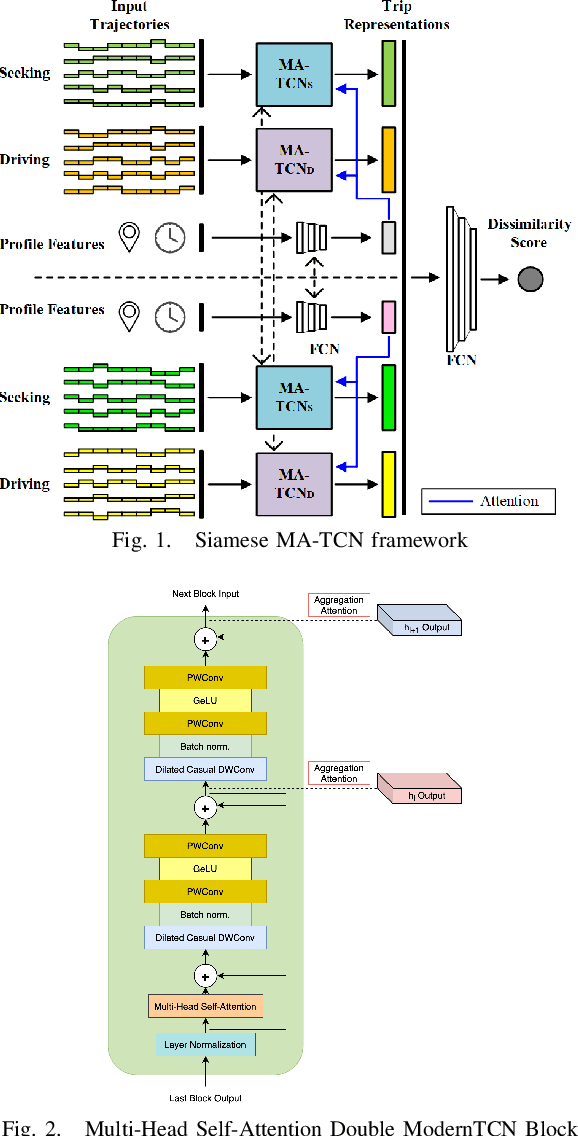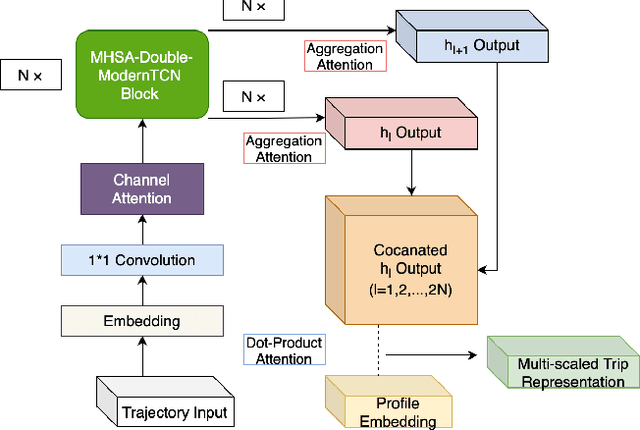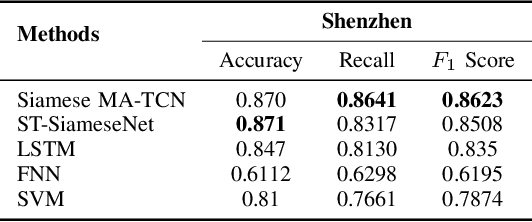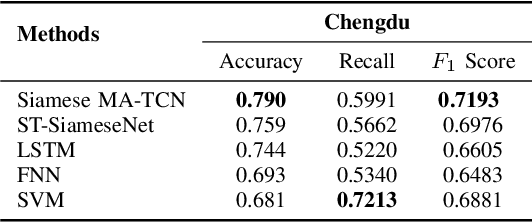Siamese Multiple Attention Temporal Convolution Networks for Human Mobility Signature Identification
Paper and Code
Aug 17, 2024



The Human Mobility Signature Identification (HuMID) problem stands as a fundamental task within the realm of driving style representation, dedicated to discerning latent driving behaviors and preferences from diverse driver trajectories for driver identification. Its solutions hold significant implications across various domains (e.g., ride-hailing, insurance), wherein their application serves to safeguard users and mitigate potential fraudulent activities. Present HuMID solutions often exhibit limitations in adaptability when confronted with lengthy trajectories, consequently incurring substantial computational overhead. Furthermore, their inability to effectively extract crucial local information further impedes their performance. To address this problem, we propose a Siamese Multiple Attention Temporal Convolutional Network (Siamese MA-TCN) to capitalize on the strengths of both TCN architecture and multi-head self-attention, enabling the proficient extraction of both local and long-term dependencies. Additionally, we devise a novel attention mechanism tailored for the efficient aggregation of multi-scale representations derived from our model. Experimental evaluations conducted on two real-world taxi trajectory datasets reveal that our proposed model effectively extracts both local key information and long-term dependencies. These findings highlight the model's outstanding generalization capabilities, demonstrating its robustness and adaptability across datasets of varying sizes.
 Add to Chrome
Add to Chrome Add to Firefox
Add to Firefox Add to Edge
Add to Edge